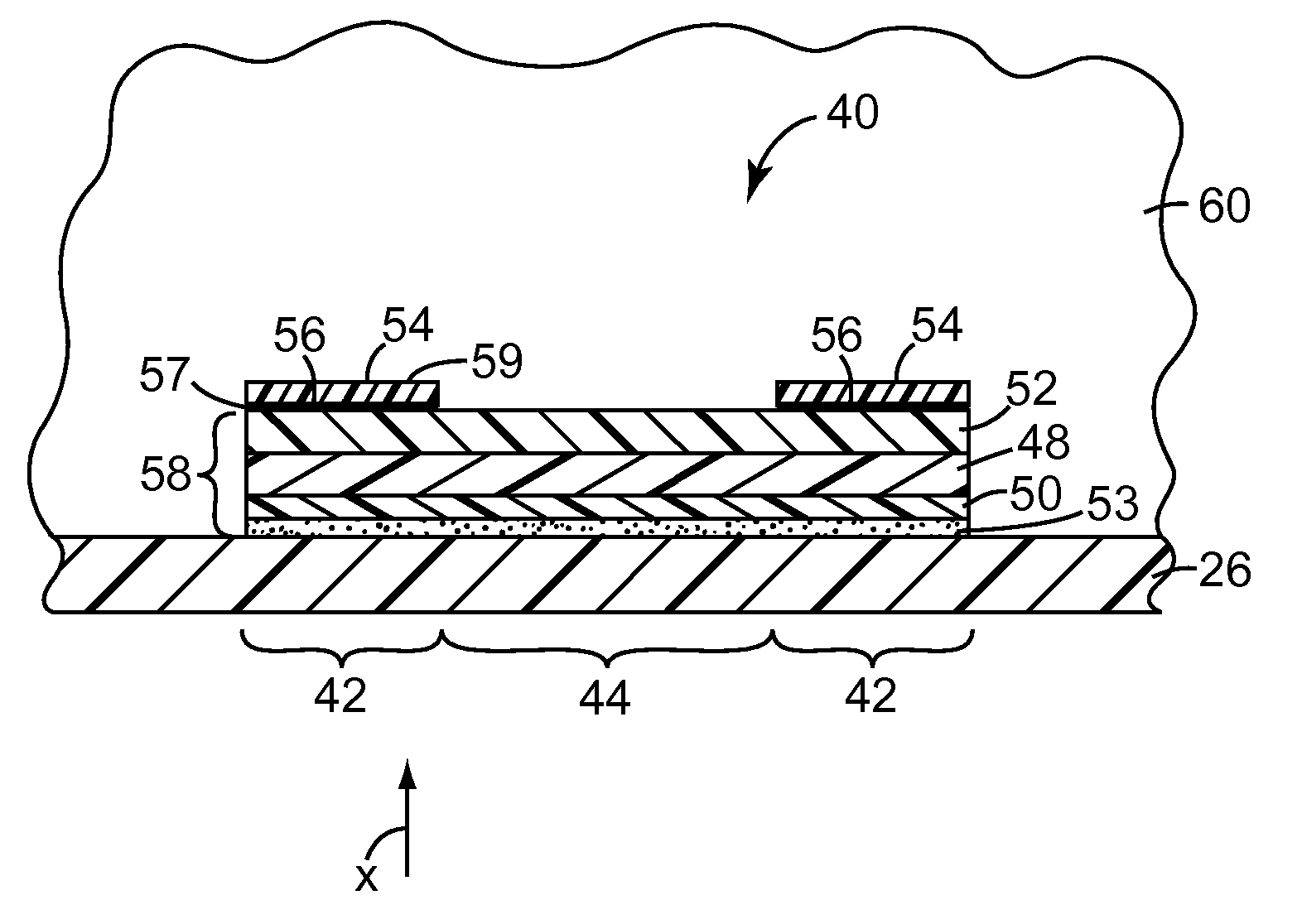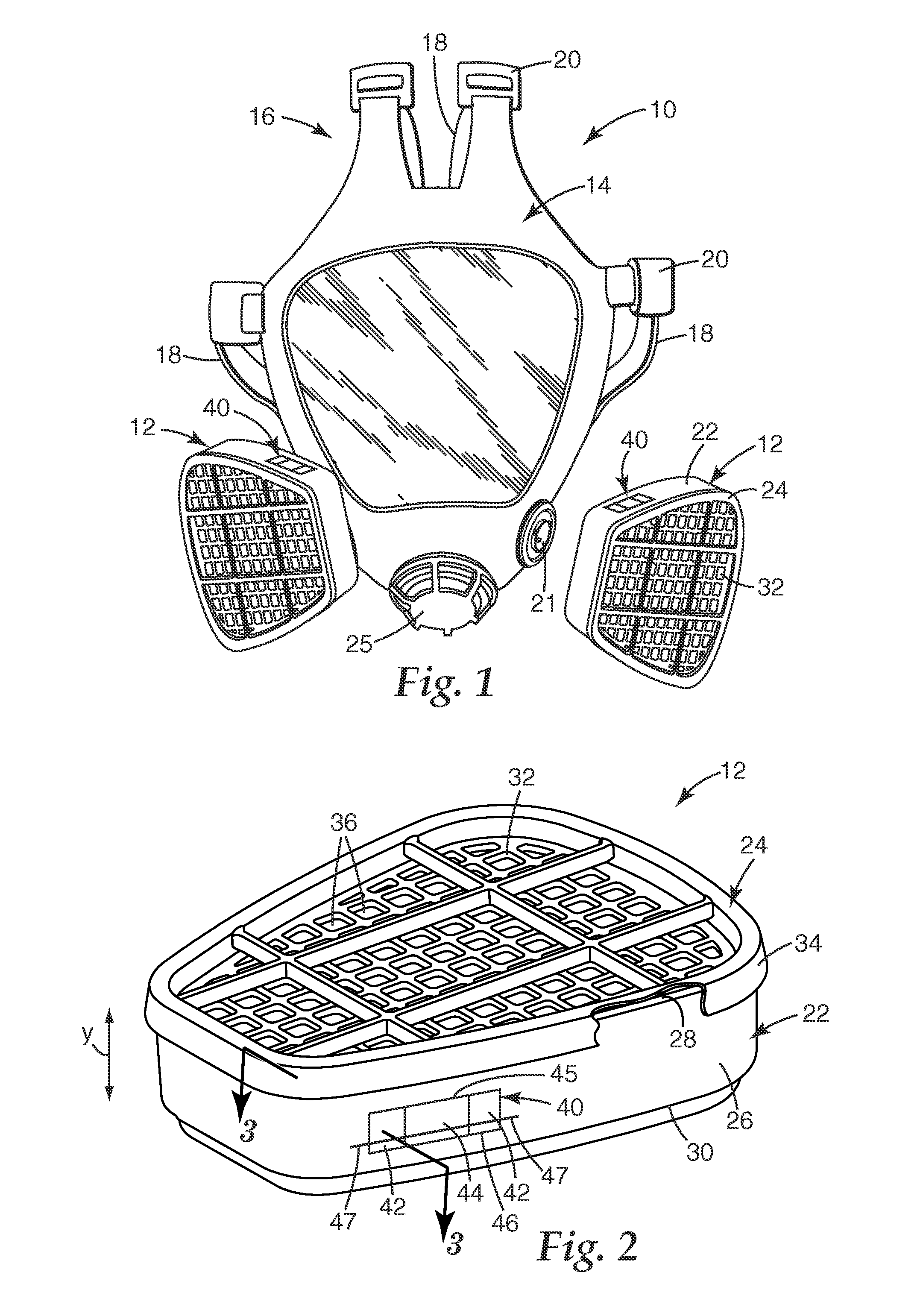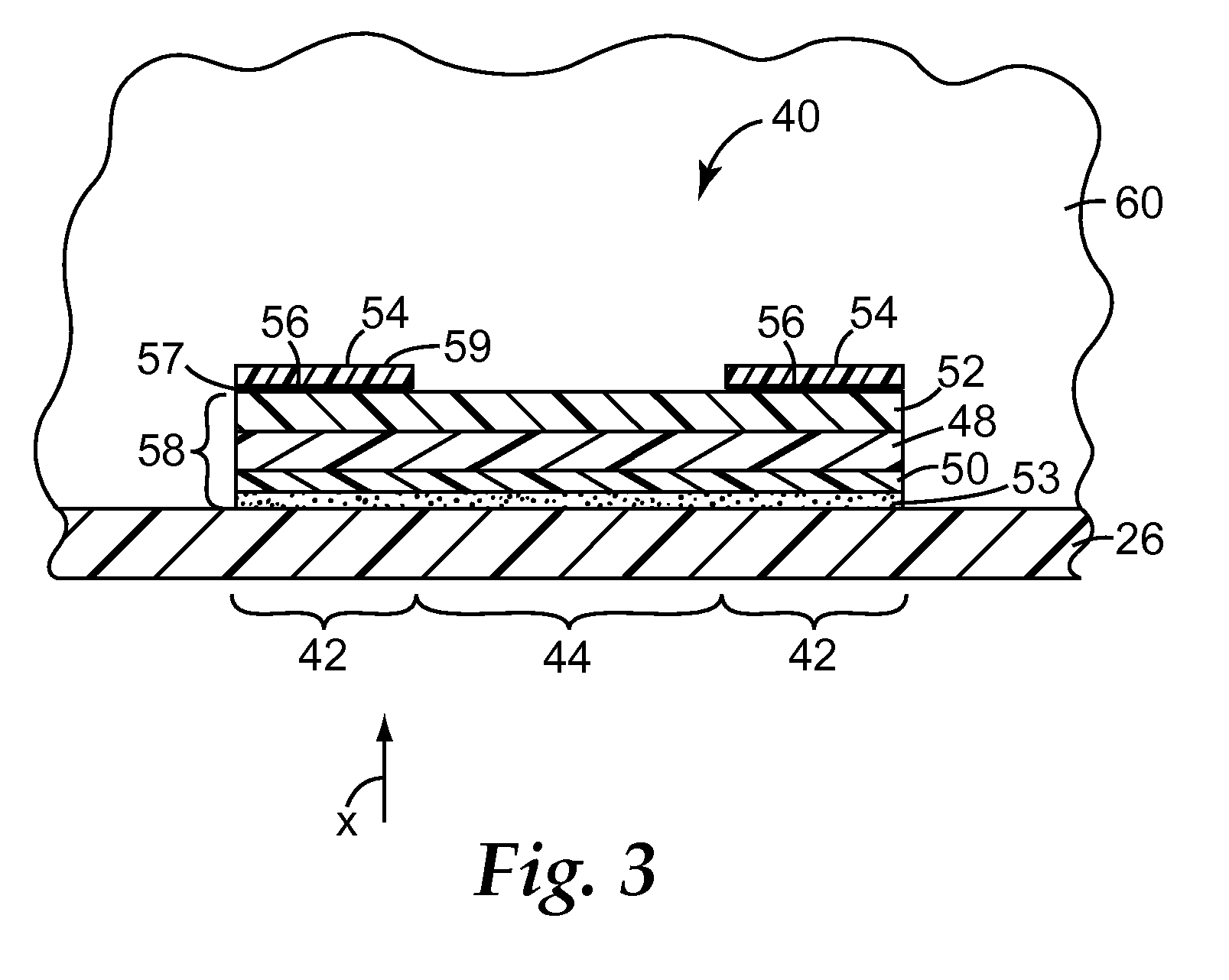Patterned chemical sensor having inert occluding layer
a chemical sensor and inert layer technology, applied in the direction of filtration separation, separation processes, instruments, etc., can solve the problems of color change in the sensor portion, and achieve the effect of clear distinction, clear contrast, and easy discernibility
- Summary
- Abstract
- Description
- Claims
- Application Information
AI Technical Summary
Benefits of technology
Problems solved by technology
Method used
Image
Examples
example 1
[0067]An example of the invention was made by constructing four layers of material into a sensor film. Layers of the sensor film consisted of: (1) a semi-reflective layer; (2) a porous detection layer; (3) a reflective layer; and (4) an occluding layer.
[0068]Construction of the sensor film began by creating the semi-reflective layer, which was made by coating nickel onto one surface of a polyethylene terephthalate (PET) film (Melinex ST505 clear PET, [Dupont Teijin Films], [Hopewell, Va.]). Nickel was applied to the PET using thermal evaporation under vacuum (base pressure of 10−5 torr). Two Temescal Simba 2 electron beam sources (Edwards Corporation, Tewksbury, Mass.) were used to heat the nickel in graphite crucibles; nickel was deposited until a target optical transparency of 27% was reached, corresponding to a thickness of approximately 10 nm.
[0069]The second layer of the sensor film, which was applied to the Ni coated side of the semi-reflective layer, was a polymer layer of in...
PUM
| Property | Measurement | Unit |
|---|---|---|
| effective diameter | aaaaa | aaaaa |
| diameter | aaaaa | aaaaa |
| diameter | aaaaa | aaaaa |
Abstract
Description
Claims
Application Information
 Login to View More
Login to View More - R&D
- Intellectual Property
- Life Sciences
- Materials
- Tech Scout
- Unparalleled Data Quality
- Higher Quality Content
- 60% Fewer Hallucinations
Browse by: Latest US Patents, China's latest patents, Technical Efficacy Thesaurus, Application Domain, Technology Topic, Popular Technical Reports.
© 2025 PatSnap. All rights reserved.Legal|Privacy policy|Modern Slavery Act Transparency Statement|Sitemap|About US| Contact US: help@patsnap.com



